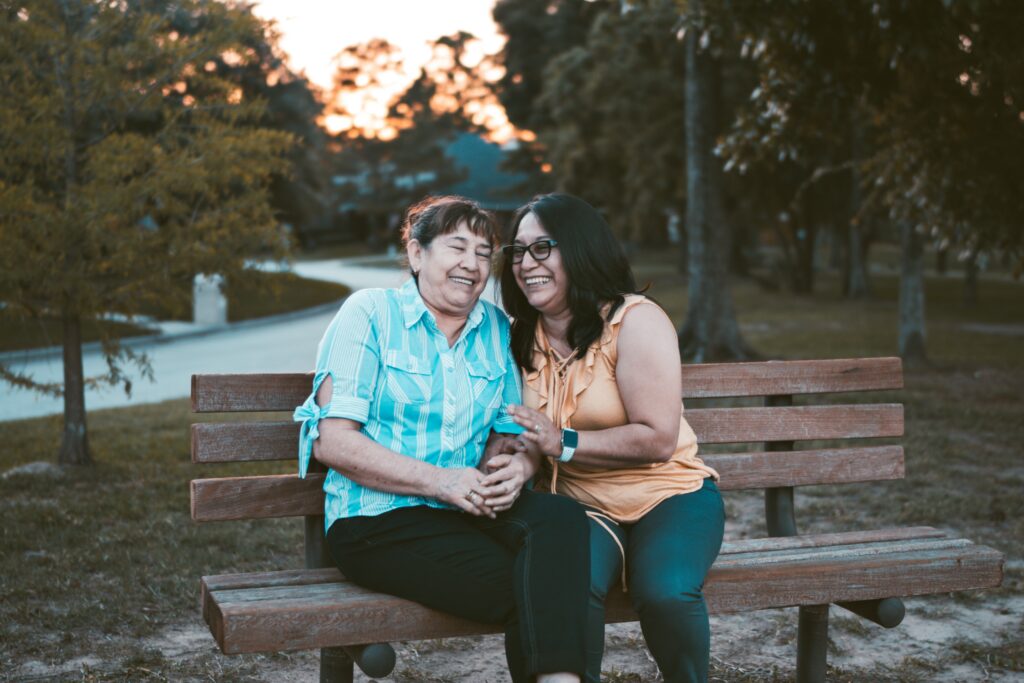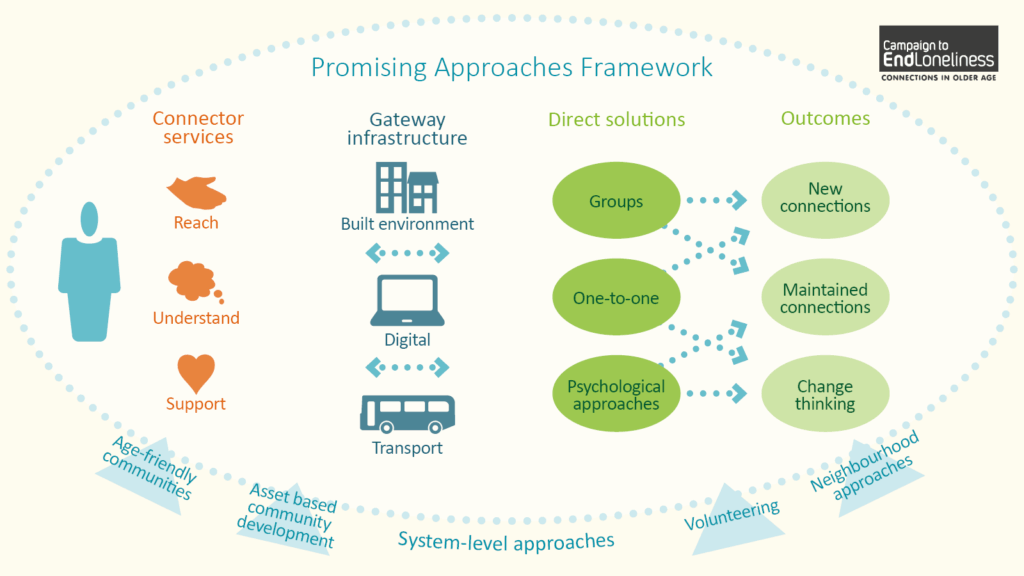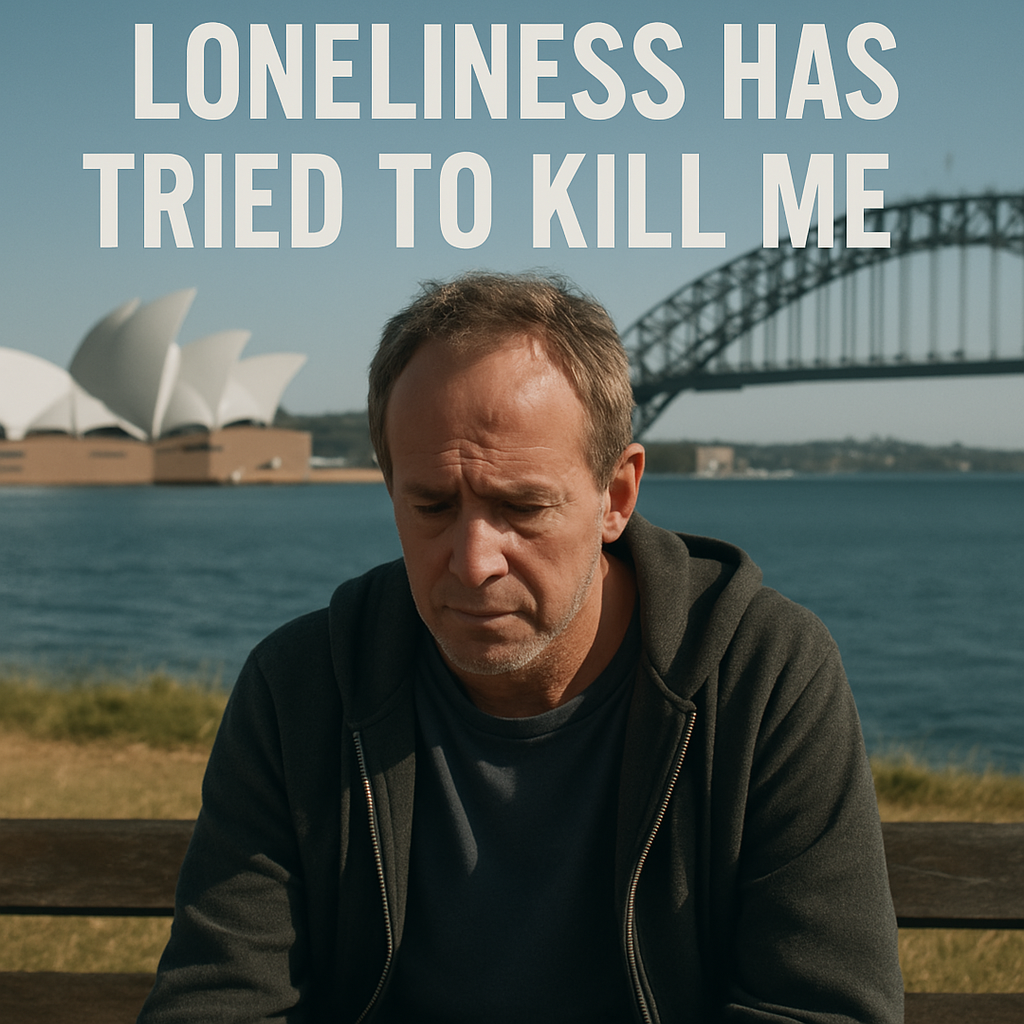Demonstrating the value of befriending

Members of the Tackling Loneliness Hub recently came together for a workshop on how befriending projects can demonstrate and measure impact. This blog post provides a brief overview of the discussions. If you’re a member of the Hub, visit the Befriending Group to watch recordings from the workshop, share your own thoughts on befriending, and continue the conversation.

Overview of the workshop
The workshop aimed to explore several questions related to befriending projects for older people aged 55 and above, notably:
- What do we mean by befriending?
- What outcomes are befriending projects achieving for older people?
- How can befriending projects demonstrate and measure their impact?
- How can we as a sector better understand the nuances of supporting older people and – with this understanding – effectively monitor befriending projects.
Understanding befriending
Kate Jopling presented findings from two reports: Understanding Befriending and Lessons from befriending in the time of Covid-19 which explored what good befriending looked like. The definition of befriending used in these studies related to:
- A service for people who are lonely or isolated.
- One-to-one meetings between a volunteer and service user for the purposes of companionship.
- A time-limited, managed amount of contact that is not spontaneous.
Befriending has been around as a response to loneliness for a very long time, however evidence on if it does or doesn’t work in addressing loneliness is limited.
Although befriending may not end loneliness, the existence of the befriending relationship has value in and of itself. Organisations should be confident in talking about the value of befriending and how it is an incredibly important response to loneliness, even if it does not necessarily act as a stepping stone to increased social contact.
Insights from Age UK Sutton
Nicola Upton discussed work happening at Age UK Sutton, notably their Let’s Connectprogramme which involves community connector volunteers supporting older people to overcome the barriers of taking part in the activities they want.
The development of this programme arose from asking older people what they wanted. Insights showed that whilst older people said befriending was helpful, when asked if befriending is what they would have chosen had they been given a choice, the responses were a lot more varied.
By moving away from traditional befriending services, Age UK Sutton are able to generate impact and support older people to foster meaningful connections in other ways, whilst leaving space for specialist organisations in the borough that do befriending projects incredibly well.
Measuring the impact of befriending
Sarah Van Putton highlighted that Befriending Networks currently support over 370 member organisations across the United Kingdom. During 2020/21, their members provided services to approximately 80,000 people with over 1.6 million hours of befriending. As Sarah indicated, befriending is a significant part of community connections, but it should not be seen as a replacement for bespoke health and social care support, nor is it the right solution for everyone.
At Time to Talk Befriending, Emily Kenward shared how they measure the impact of their befriending projects in a number of ways:
- Retired professionals (mostly social workers) undertake scheme member and volunteer reviews over the phone. This includes monitoring satisfaction rates, challenges of befriending matches, and areas of unmet needs.
- Periodic surveys which enable them to review the impact of their services and the knock-on effects on wider local strategy.
- Working with consultants or the local University to help with evaluation. This can help with overall objectivity of the evaluation, and can pick up on themes and findings that might not otherwise have been seen.
- Annual surveys for referrer organisations to hear what they are saying about the service and how it can be improved.
- Member panels of older people, volunteers and partners to ensure the service is quality assured, as well as feeding in thoughts to service development.
Benefits of monitoring and evaluating befriending projects
Listening to older people and incorporating their feedback into service design is very important. Rohini Corfield (Voluntary Action South Leicestershire) shared how service users and volunteers need to feel empowered in making suggestions of what they want the project to do. Actively seeking feedback and monitoring projects is one way of doing this. At Voluntary Action South Leicestershire, they have a steering group made up of project stakeholders who regularly give feedback on services and how they can be improved.
Other benefits of monitoring and evaluating befriending projects, as shared by Emily Kenward include:
- It helps to adapt and improve services, helping to reduce the risk of mission creep.
- It helps with volunteer retention and the sustainability of matches by ensuring volunteers are appropriately trained to meet the required demands.
- It can assure funders, through reports and evidence based on what older people say they want and need.
How else can we as a sector better understand the nuances of supporting older people and – with this understanding – effectively monitor befriending projects? Share your thoughts in the Befriending Group.





This worksop was really thought provoking in looking at what works for different people and why a mixture of approaches can be useful.